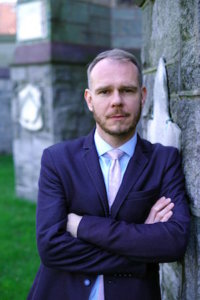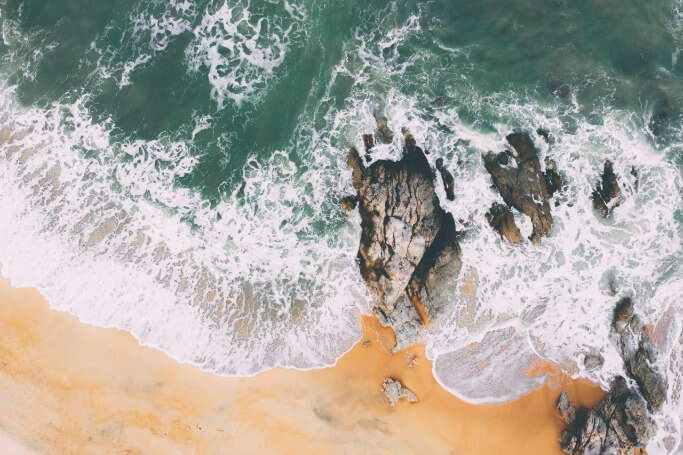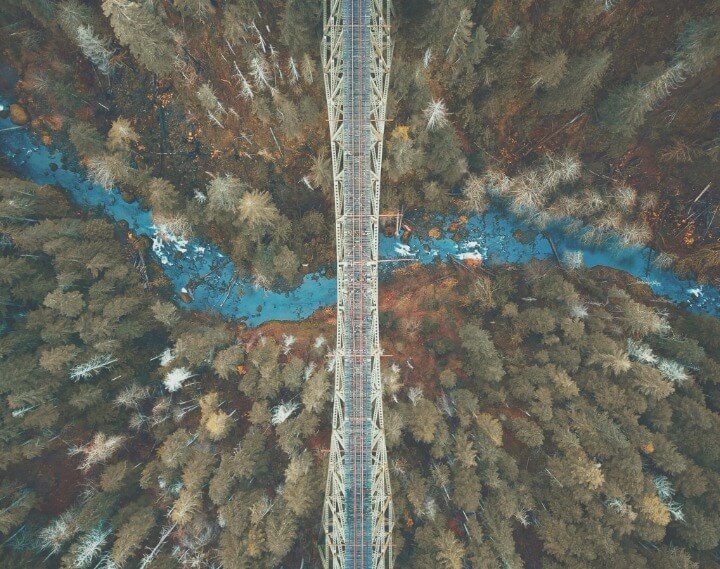The University of Wisconsin-Madison is well known for its leadership in the social science of science communication. I spoke to Dr. Dietram Scheufele, a communication expert at UW-Madison on the public and political interfaces of emerging science, about what we are learning from social science research and how researchers can better communicate for societal impact.
Nancy Baron (NB): The big challenge that I see for scientists is a practical concern. Reading your papers, you play a very interesting role in synthesizing the state of what is a pretty varied literature and body of social science, providing milestones for where the thinking is and moving it along. How can more scientists plug into the social science research that you are doing, because it’s so essential to everything they want to achieve in the real world?

Dr. Dietram Scheufele.
Dietram Scheufele (DS): I think you’re giving me more credit than I deserve! I don’t think that social scientists have published their research in ways that lend themselves particularly well to translation or application. It’s a fairly young discipline. It’s always been very concerned with being seen as a real academic discipline, and less concerned with how it’s being used by practitioners.
Now I’m trying more and more to do work and write it up in a way that’s accessible. An important consideration for social science is: What do other communities need to know – what do you, as a practitioner, need to know for your work? A good parallel is medical science, where they’re looking for particular treatments, and then feeding that need into basic research, which produces findings that feed back into applications. By following that model for science communication, hopefully we’ll get there.
NB: Your plenary talk at NACCB is for an audience of conservation scientists, the who’s who of the conservation community across North America. Your work doesn’t really focus on the environment, but it’s applicable and relevant to it. On the theme of communicating for conservation action, what do you wish that these scientists understood or might do to be effective communicators and have a more effective role in shaping policy and on public opinion?
DS: As you know, there’s no one magic bullet.
NB: Right, but where do they begin?
DS: I think that the biggest challenge, especially as it comes to conservation and behavior change, is the idea that, information has its complexities, so we all put things in buckets in our mental shelves to sort and organize, we process it that way. It doesn’t matter what buckets are in my head as a scientist, what matters is what buckets are in my audiences’ heads. As a kid in Germany, I had a toy with different shaped holes, and you had to put the shapes into the right holes. Scientists often try to fit the square shape into the round hole – the scientists say, “It’s a square, why can’t you see that?” But the audience perceives a round hole, so it won’t fit.
The one takeaway messages is – if you want to have change, it happens at the audience level. Unless it resonates with the audience, you have a problem. I know to you, Nancy, that sounds trivial, but that’s the biggest disconnect for scientists. They cannot imagine this. One example, I gave at talk at the Academy on motivated reasoning, and how things mean different things to different people. The first question I get from a scientist is ‘That’s not possible!’ Scientists see facts, but a fact is not the same fact to different audiences. That’s not right or wrong, it’s just the way it is.
NB: I’m interested in how this fits into what we’ve been working on as communication practitioners. The role that we’ve (COMPASS) evolved, bringing journalists into our trainings and even this NACCB conference – it’s not that we think that mass media is the only answer, we know the world is fragmented and complex – but journalists are steeped in social context, they live this whole idea of motivated reasoning – that things translate differently to different audiences. And so, by bringing them in and building them into the conference and having them ask questions, they can animate discussions that change the way scientists think about their work, and what’s going to resonate with other audiences beyond themselves. What we really need are more conversations among people who don’t think the same way. We need to silo-bust. So as a practitioner, how do we help scientists understand what they need to know, and practice it?
DS: I think in many ways, we scientists have to play the role of journalists because they’re going away more and more. The New York Times is getting rid of whole science desks. Why is this a problem? Because it takes two things away: first, journalists are the distillers of complexity – none of us has time to read 20 years of climate change research, I won’t read 20 years of climate change research – but journalists can take 20 years of climate change research and translate into 300 words or less. And then they also have the ability to take the square shape from the metaphor earlier, and fit that into a triangle in my brain. That’s what journalists do particularly well. They fit information into our brains, and explain why it matters to us. Scientists can reduce complexity, but that’s only one thing, taking the abstract and turning it into something that everyone can understand, and putting it in a way that resonates with me, why this matters to me, why this is exciting – this is one part where scientists can directly relate to journalists.
And that’s why COMPASS and other organizations are important. If you can describe why climate change should be important to me and my daily life, it becomes something I understand, and it’s not just about Al Gore and politics – it matters to my shoreline, it matters to me. Former Republican US Congressman Bob Inglis has a great story about coming to understand climate change. His son said he would vote for him, but first he needed to clean up his act on climate change.
NB: We are hoping to infuse that kind of thinking at NACCB – scientists are used to being the sage on the stage – but we need more conversation. In conversations you ask questions back and forth and that’s how you get to know your audience and calibrate – to use your metaphor – whether your square is going to fit or actually this is a triangle or another shape.
DS: An important aspect of that is that when you and I have a conversation, neither of us know where it’s going to go next. Scientists still assume that they have control over what’s being talked about and what the issues are. It’s not very useful or realistic – in real life, you talk about CRISPR (gene editing) and then the audience asks questions about religion. If you have a conversation, you have to listen to the audience and the questions they raise, and some won’t be about the science. You have to be ready for that. The more science changes and the faster it changes, we have to be ready for that. Scientists are beginning to see that new types of conversation need to take place.
NB: In one of your papers, you talked about the idea that we have to be comfortable with things that bite. You wrote,
“Franz Kafka once said that we should only read books that bite and sting us; social science proves him right. We are much more likely to explore all sides of an issue and carefully reason through alternatives if we have our viewpoints challenged.”
Can you elaborate on this concept? And how can scientists become more comfortable with challenging conversations?
DS: A good chunk is simply being used to it and exposing yourself to those things. Of course it’s easier said than done. We spend decades training scientists to avoid emotion and knee-jerk reactions. Motivated reasoning is how humans think things though. We do it all the time. Scientific thinking is not motivated thinking. Talking like a human again needs motivated reasoning. Don’t do it in a NSF grant, but it’s important to do it when you need to. When I was a Cornell professor – that first lecture to 100 students, you know that people will be looking at you and will judge what you say, and find where you’re wrong, and ask you hard questions, and that’s science communication. After the second, or third, or fourth time you get used to it, and you become a better teacher.
The books that bite you quote from Kafka, is about how humility is important. Science is our best way of finding out new knowledge, but it doesn’t have all the answers. It’s also about respecting the other side. Even someone with views you don’t share – say someone with a deeply religious view that I may not share, I still need to listen. And I better have good answers for their questions, because they’re the taxpayers funding us. Otherwise I’m being dishonest. That’s why I think the conversation part has something valuable. The things that “bite” you can tell you things that you didn’t know, and that’s why you need to talk to those audiences. They make your science better, and lead to better decisions.
NB: Scientists want to engage, but how do they start? If they put their heads above the parapet and become victims of the ‘nasty effect’ that you and Dominique Brossard coined, how do they deal with that? What should they think about?
DS: A couple of things – one is very personal, I’ve gotten yelled at for a variety of things, sometimes by both sides, which is usually a good sign you’re doing something right because you’re somewhere in the middle. People writing on a blog or to the editor saying I’m wrong, it comes with the territory. People will disagree with you. You have to learn to live with some criticism. It’s not even about growing a thick skin, but accepting that it’s just what it is. From a personal perspective, I had to learn that or I’d never talk about my research. Number two, finding constructive ways of engaging with those audiences helps. There are best practices, such as moderating comments. Science journalists are doing especially well at engaging and improving the discourse. There are some great ideas for scaling up, like the Reddit model – if you want to do a blog or have discussions around things. This is where the burden is on social science, to help build better infrastructure. Circling back, our discipline was so concerned about doing social science for the sake of science, we didn’t do as good a job as we could have on how to actually deal with this.
Some of our research on the nasty effect, we put in a condition with a fake moderation, ‘this comment has been removed by a moderator’ – even though nothing was actually removed – but that condition reduced the nasty effect, people thought there was a parent in the room. They saw the same nastiness in the comments, but on the one with the moderation, they didn’t show the same reaction. Social science hasn’t offered enough help, and I put some blame on my profession.
NB: I love the “parent in the room” cooling effect. That’s a helpful and concrete thing. As you said, we’re aiming for heterogeneous, but still civil, discourse. Disagreement can be courteous, and that’s where we want to get to – is it achievable?
DS: I do think we will have to figure out a way to navigate a new information environment. We’re moving further and further apart, not just ideologically, but also how we think about others. When asked if the other party is dangerous for America, one third of Democrats and one third of Republicans think the other party is out to destroy America. How do we air our disagreements, get all the good ideas on the table and pick the best one, without yelling and screaming at each other? That’s what the Federalist Papers and the U.S. Constitution are all about. I’m not an eternal optimist about much, but I’m an eternal optimist when it comes to democracy and figuring out disagreement. Every piece of research I’ve seen, the more that we are exposed and participate in the political process, the more informed we are and the better we do with making decisions, and the more that social science can do to help, the better we’ll be.
NB: It sounds like a lot of this boils down to being better listeners, being more open to different opinions and ideas and willingness to find common ground.
DS: In the academic field, we’re so used to being right and proving we’re right, but journals reject 95% of our papers. So part of it comes with our territory—to get published you work even harder to prove you’re right. You can’t train a dog to do the same thing again and again and be surprised when it does it. We’re so used to being right and proving we’re right again and again, but unless we can figure this out, we’re not going to be better communicators.
Being an effective communicator may have nothing to do with being right. You have to let go of that idea if you want to change people’s ideas or behavior. If I come in saying climate change is real, I may be right but I may have a problem if my audience has a different view. But if what I really want is for people to stop driving big cars that emit more carbon dioxide, I don’t necessarily have to talk about climate change at all. I don’t have to activate that framework. I want to change their behavior with cars, so I talk about the cars. We have to give up raising a finger at the end to say ‘I was right.’
NB: I hope we can figure out ways to bring together practitioners and academics in communications, in more ways going forward. There’s a huge need.
DS: The National Academies of Sciences consensus report will come out in the late fall, designed explicitly with ideas for how we can translate science for practitioners. Within the Academies and elsewhere, people are thinking along those lines. The Sackler Colloquium event on the science of science communication took a stance, saying it was important, and now hopefully we’ll be able to take a translational stance. Interestingly enough, University of Wisconsin (and others) have put into their tenure guidelines for the biological sciences, that outreach can be one of your strength areas for tenure consideration, not just a line item in your grant. Once we see those internal reward structures changing, that’s big. That’s a sea change.
With thanks to Sarah Sunu for transcribing this conversation.



